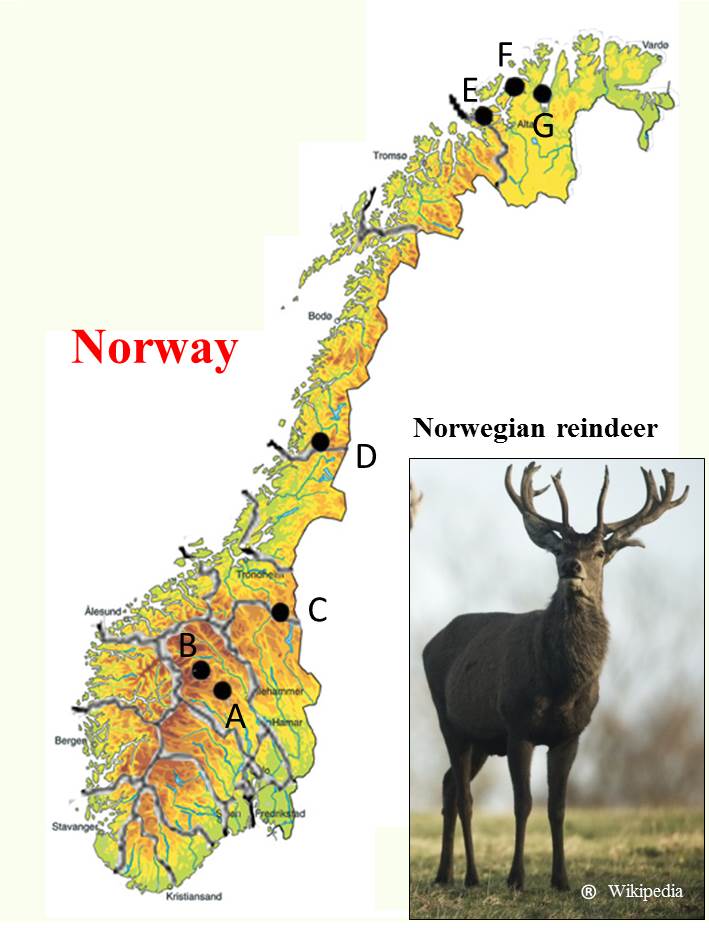Chernobyl NPP accident resulted in a wide spread of considerable amounts of radioactive fallout in large areas of Europe. The fallout closely followed rainfall and was therefore heterogeneously distributed. Central Norway was one of the areas in Western Europe most highly contaminated by fallout deposition, while Northern Norway remained unaffected.
Chromosome aberrations in peripheral blood lymphocytes were studied in adult and calf reindeer, Rangifer tarandus L (image by Wikipedia 2015). The reindeer is particularly exposed to isotopes from radioactive fallout relying as it does on lichen as one of its main food resources. The lichen takes its nourishment from the air and may thus absorb all kinds of airborne particles and accumulate radioactive fallout. The levels of 134Cs+137Cs in individual reindeer in the most contaminated areas were recorded to be 150 kBq/kg. However, the level changes according to the seasons and time after the accident.
Samples for cytogenetic studies were taken at different times during the period from June 1987 to June 1990 as representatives of the exposed (Herd A, B, C and D) and non-exposed controls (Herd E, F and G).

